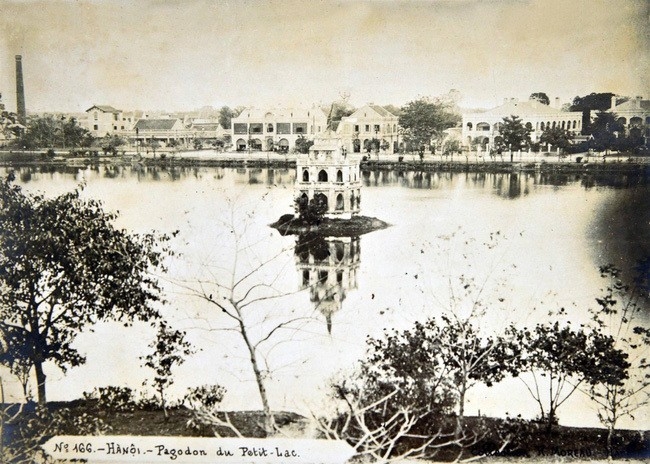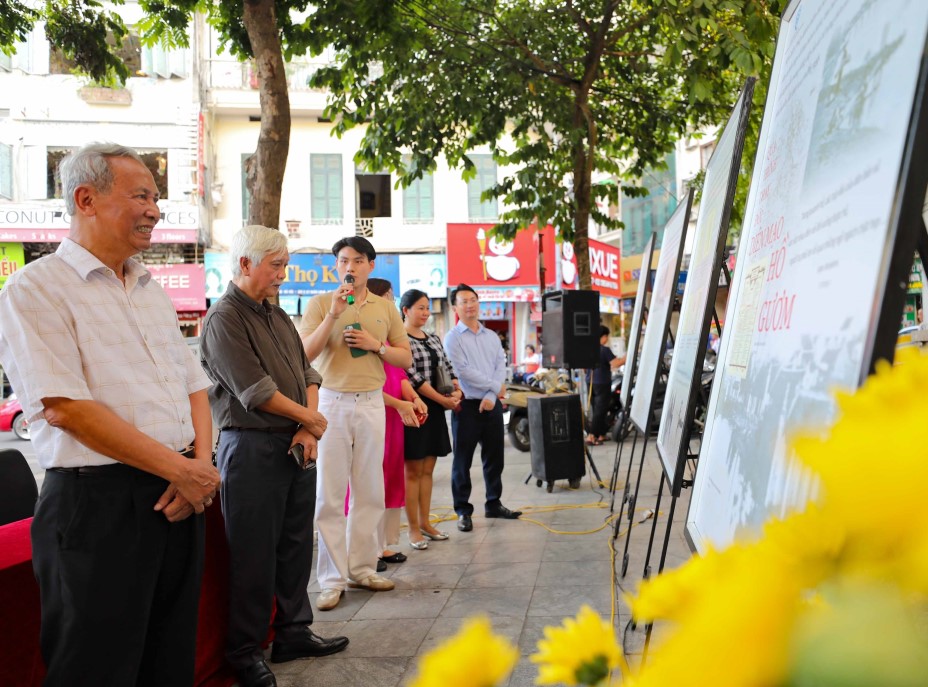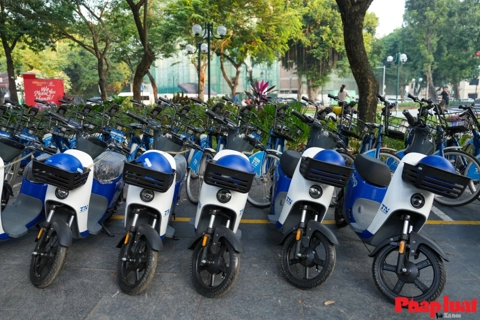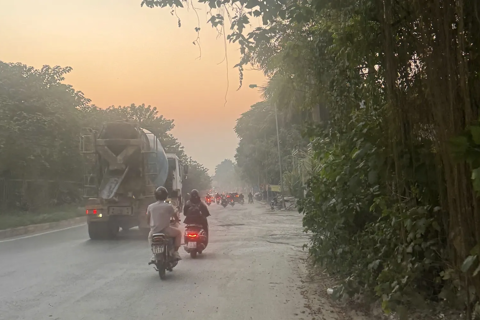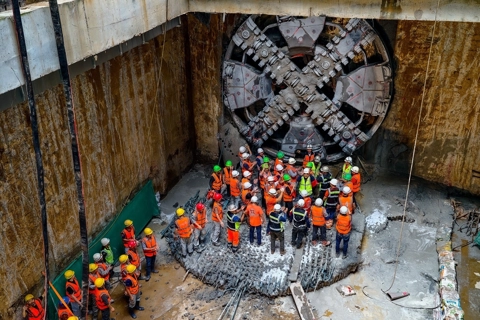Exhibition shows how Sword Lake changed over time
The exhibition will enable people to see the remarkable changes in the iconic lake in Hanoi over the years.
An exhibition entitled "Sword Lake: East-West Intersection" opened in Hanoi on October 6, showcasing Hanoi in the old days through the archives of the National Archives Center I.
The exhibition offers the public an opportunity to step back in time and gain insights into the various transformations that have taken place in Hanoi over the course of a century.
It shows the evolution of the capital city from a tiny area around Ho Guom or Sword Lake (Hoan Kiem Lake), chosen by the French as the focus of their planning, to its gradual expansion into the surrounding areas. Efforts have been made to beautify the streets, selectively preserve historical relics, and construct many new landmarks and administrative buildings. Hanoi has undergone a transformation, becoming more contemporary while retaining its timeless essence.
| Sword Lake in the early 20th century. Archive Photo |
The exhibition features a wide range of historical treasures, including more than 100 documents, images, design drawings, and planning maps, providing a glimpse of ancient Hanoi.
The exhibition is divided into three sections: The process of Sword Lake's transformation; the Preservation of Sword Lake's cultural and historical space; and Sword Lake - Center of Service, Culture and Entertainment.
The first part allows viewers to witness the changes in the historical landmark over the past century, starting in 1873, before the French colonists began to construct the first buildings on the concession area along the road that crosses it, now Pham Ngu Lao Street.
Sword Lake, a remnant of the ancient Nhi Ha River, is a famous scenic spot in the capital, surrounded by Hang Khay - Le Thai To - Dinh Tien Hoang streets.
| PhD Do Van Tru (first left) and historian Duong Trung Quoc (second from left) attend the exhibition. Photo: VNA |
With its prime location, the lake was chosen by the French colonists to become the heart of the capital's renovation as soon as they arrived.
The second part of the exhibition shows the efforts of the city authorities to preserve Sword Lake through the implementation of many policies.
Beginning in 1884, the French colonial government urgently planned to rebuild the city, including turning Sword Lake into an entertainment area and building a wide road around the lake. Therefore, all huts, communal houses, and places of worship such as Ba Kieu Temple, Bao An Pagoda, and King Le Temple were demolished, except for religious buildings on Ngoc Son and Quy Son islets.
According to French painter André Masson, Ho Guom Lake then became a precious gem in Hanoi, serving as a delightful link between the local community and the French Quarter.
The last part of Sword Lake called the East-West Intersection is an affirmation that Sword Lake is the service, cultural, and entertainment center of the capital city and the whole nation.
The eastern side of Sword Lake and the surrounding area were effectively transformed into a neuralgic core of Hanoi thanks to the villas, administrative buildings, and other infrastructure built by the French colonial authorities.
The exhibition will run until October 31 at the Hoan Kiem Lake Cultural Information Center to celebrate the 69th anniversary of the capital's Liberation Day (October 10, 1954).

